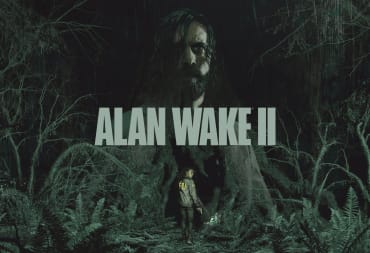Alan Wake 2 is easily one of the best survival horror games I’ve ever played. Unfortunately, it’s also one of the most problematic that I’ve reviewed. Does that make sense? Well, allow me to explain.
To be perfectly clear: I barely played the original Alan Wake game. I only spent a few hours on Control and Quantum Break, and the first two Max Payne games were the only titles from Remedy Entertainment that I clearly put more hours into many years ago. But I do love the survival horror genre, so I checked out Alan Wake 2 with an open mind, eager to see Remedy Entertainment’s latest offering.
I was blown away by some of the craftiest and most unique gameplay mechanics I’ve ever witnessed, while also let down by numerous technical issues.

Under Investigation
Alan Wake 2’s campaign puts you in the shoes of Saga Anderson, an FBI detective investigating a murder cult in Bright Falls and Cauldron Lake. Along with her partner Casey Anderson, it's discovered, that the celebrated author Alan Wake might be involved.
The story starts out slow as Saga conducts her investigation and meets with various characters (including an appearance by Shawn Ashmore who played the leading role in Quantum Break). Tension builds until you encounter the Taken, malformed creatures that have been claimed by the Darkness.
As someone who barely played the original game, I found the story evenly paced. There were moments that were meant to excite and shock, interspersed with segments that gave you enough time to catch your breath.
I also wasn't as confused as I thought I would be, and that’s a testament to a brilliantly written narrative, along with memorable performances from the main and supporting characters.
Coincidentally, Alan Wake 2 is also not a purely linear game. The environments themselves, such as the forests of Cauldron Lake, the bustling town of Bright Falls, and a neo-noir-themed New York City have larger areas that you can explore. I didn’t feel as though I was simply being led from Point A to Point B, and I was given ample time to take in the sights and sounds, as well as to gather collectibles (more on these later).

Dark Places And Dark Spaces
Speaking of the Darkness, here’s where Alan Wake 2 truly shines (pun intended). Several of the game’s chapters are set in dimly lit locales. Creatures corrupted by evil lurk in every corner, making light your primary weapon.
Stand in a Safe Haven, a lamppost or save point, and enemies won’t detect you (though lampposts will flicker and get disabled temporarily if you attack or move out of their radius). Shine your flashlight and the corrupted creatures will get blinded or have their shields removed. You then bring out your trusty firearm to land a few well-placed shots.
Initially, all I had was a pistol, but I eventually graduated to mowing down foes with a trusty sawed-off shotgun. Other armaments I added to my arsenal included a crossbow, hunting rifle, and pump-action shotgun. Some weapons were obtained through natural progression, while others were procured by completing mini-puzzles.
Knowing that I was playing a survival horror game, proper resource management was in order. That also led to frantic moments, such as running away from monsters whenever my health was low, or praying that I could stun a target with my last flashlight boost.
Since I had to often bring out my flashlight just to see in the dark, there were also instances when I thought I was seeing things. Shadows playing tricks on my eyes, waiting to jump out. Alan Wake 2 does also have its fair share of genuine jumpscares. The atmosphere promotes an eerie feel being complemented by chilling music and sound effects, rustling of leaves and audible murmurs from shades.

Piecing The Puzzle
Something that truly sets Alan Wake 2 apart from other titles I’ve played in the past is how it handles progression and collectibles. As an FBI agent, Saga collects evidence that she places on a board in her Mind Place (think the Mind Palace from Frogwares’ Sherlock Holmes games).
Sometimes, you might be able to deduce a key concept, or she’ll be able to profile various NPCs, peering into their thoughts to find what she needs. That leads to new dialogue options so you can advance to the next step.
Moreover, there are dozens of collectibles for you to find. As a completionist at heart–and because I have to work on guides, too–I enjoyed discovering secrets ranging from lunchboxes with upgrade materials or cult stashes with lots of loot, to nursery rhyme charms and perk-bestowing glyphs.
What truly astounded me was how collectibles are mini-puzzles in their own right. For instance, nursery rhymes require you to place dolls in specific spots based on lines. Cult stashes, meanwhile, task you with solving a mathematical equation or rechecking your surroundings for hints. Even the glyphs, known as Words of Power, require you shine your flashlight around to reveal arrows that point to a drawing.
In many ways, this concept reminded me more of Signalis and The Talos Principle, where puzzles are integral to the objective at hand. This made the task of finding collectibles meaningful, as opposed to a boring checklist-based collect-a-thon in an open-world.

Mind-bending Mechanics
Here’s where Alan Wake 2 goes from “That’s a neat horror game” to “This is one of the best games I’ve ever played. Period.” Playing as Alan has it's own spin in comparison to Saga.
This is primarily due to the mind-bending mechanics that you’ll make use of throughout the campaign, creating stories within stories and secrets within secrets. For example, the titular character uses the power of his writing and the light to alter his surroundings.
Alan has an Angel Lamp, which is somewhat similar to Dumbledore’s Put-Outer/Deluminator from the Harry Potter films and novels. Once it funnels in a flickering light, an area might change to reveal a pathway.
Alan’s own mind hub, the Writer’s Room, also has a board where you can select different scenes and themes, which then cause an area to transform before your eyes.
One instance I keenly recall was how a platform at a train station had four different scenes, some more macabre than others, such as a burning train car with victims or a summoning ritual. Although only one was the correct option, I was still surprised at how Remedy managed to craft this mesmerizing feature, seamlessly interwoven with general exploration.
To top it all off, there are references and nods to the studio’s other titles. Some are more on the nose than others, such as Shawn Ashmore’s character being called Tim Breaker–which sounds a bit like “Time Breaker” due to his role in Quantum Break, get it?
There are chapters that are either disturbing, or those that are truly out of this world. I can’t spoil a lot, but I can definitely say that these moments are worth experiencing as you play on your own.
There were segments which made me exclaim “Wow!” audibly, and those where I had a cheesy grin on my face. The only one that could compare is Sam Barlow’s Immortality. (I also don’t want to spoil that game here, but it’s that good.)

P-p-progress Breaker
Now, here’s where Alan Wake 2 goes from “This is one of the best games I’ve ever played” to “This is one of the most problematic titles I’ve reviewed.”
Bugs and technical issues reared their annoying and ugly heads once more. Some were primarily due to my PC’s specs and the game being too demanding. I have an RTX 3080 and Intel 10900K, and I had to switch to 1440p resolution with ray tracing lowered. Otherwise, I’d be looking at a slideshow.
Other technical hiccups were fairly minor, though they also caused me to spend more time than necessary. For instance, there were collectible/point-of-interest icons that either stayed on the map even though I already picked them up, and others that never appeared even though I had combed through an area.
There were also portions of the game where my character got stuck or fell through textures, which required reloading my save.
It wasn't just graphical bugs and hiccups that I experienced, there were also game-breaking bugs. I only got to the first chapter before I had a bug that prevented me from interacting with a car to leave the area. Reloading my save and restarting the launcher didn’t work. As such, I had to start a new campaign.
A bit later in the campaign, I encountered another game-breaking bug that blocked my progress completely. My only recourse was to ask a colleague to share a backup save, as they had already gotten past that part. In fact, as of the time of this writing, I had completed the game even though I did skip a couple of chapters, along with all the late-game reveals that those entailed.

Alan Wake 2 Review | Final Thoughts
For the sake of transparency, I have already reported these issues to Remedy Entertainment, and I believe these will get fixed in time for the launch. I also received a backup save file that helped me get past that aforementioned area, though, regrettably, the characters didn’t have all the collectibles and upgrades that I found throughout the course of my run.
Overall, I can wholeheartedly say that long-time fans of Alan Wake will enjoy the sequel, as will veterans of the survival horror genre. It has everything from a brilliant story and well-written characters, to tricky puzzles, mind-bending concepts, and reality-altering mechanics. I do wish the review build that I played was more polished.
Alan Wake 2 was reviewed on PC with a copy provided by the publisher over the course of 27 hours of gameplay. All screenshots were taken during the process of review.
Review Summary
Pros
- A gripping story with stellar performances from the cast.
- Crafty use of investigation and location-altering mechanics
- Spellbinding sequences, moments, and reveals that leave you in awe.
- Collectibles with their own puzzles and functions make the task feel more meaningful
Cons
- Major bugs that prevented progress, as experienced during the course of this review.
- Stuttering, slowdowns, and textures that took a while to load.
- Icons that remained on the map, leading to confusion and unnecessary backtracking.
- Audio skipping issues.
Have a tip, or want to point out something we missed? Leave a Comment or e-mail us at tips@techraptor.net













